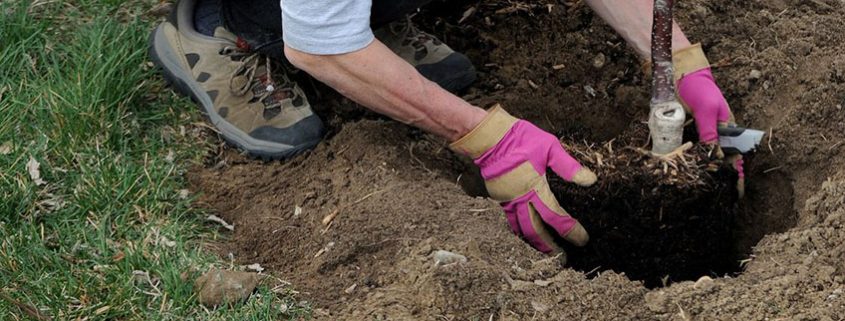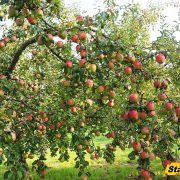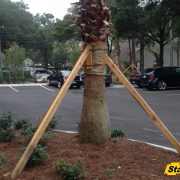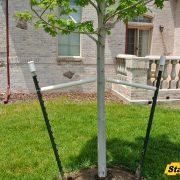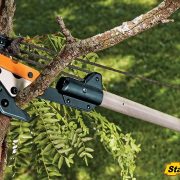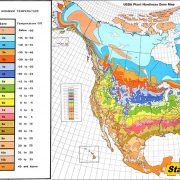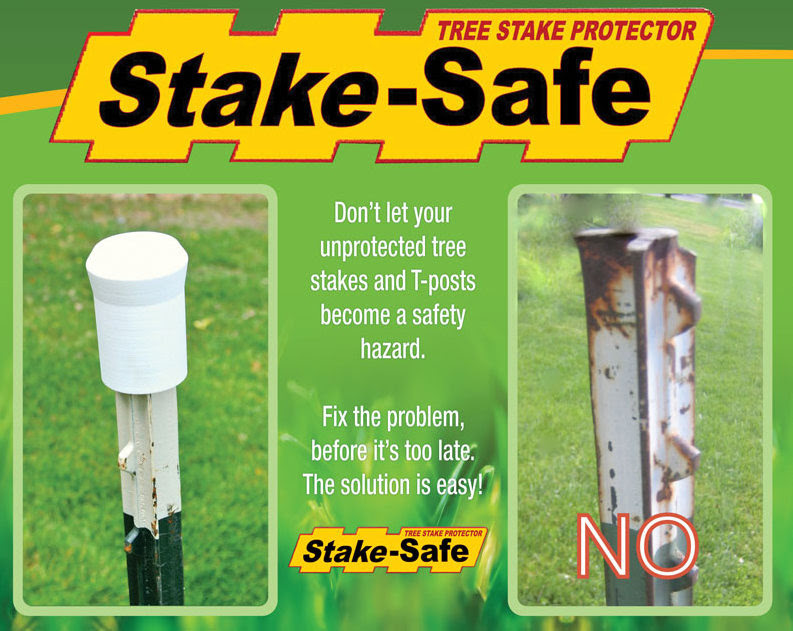Tree Planting Depth for New Trees | Proper Hole Depth & Width
What is the correct tree planting depth for new trees? Perhaps even more important what is the proper width of the new hole? These parameters may differ slightly for various species and the maturity of the young tree. But one thing is certain, all transplanted trees end up in a new hole at some point. Yet not any old hole will do. Experienced arborists recognize that both the tree planting depth and the diameter of the hole, are critical to the health of the tree.
Proper Tree Planting Depth
The most common mistake that novice landscapers make is digging a hole that is too deep. In fact, I have witnessed this same mistake made at many local nurseries. The proper tree planting depth should be such that the top of the root-ball is flush or somewhat above the grade. More precisely, we want to ensure the root-flare is slightly above the ground level. The root-flare is the point at the bottom of the tree trunk, where the trunk itself (bark included) becomes a little wider.
If by chance the nursery has planted the tree to deep, you will need to brush away some of the loose dirt on the topside of the root ball to unveil the root flare. The root flare will be small and difficult to locate on smaller trees, but nevertheless it is there, and you need to pinpoint it. If the root flare is properly located just above the ground level, the roots will grow outward as intended. If the root flare is buried below the ground, the roots may point upwards in search of water and oxygen.
If by chance, you place the tree in the new hole and discover that the hole is too deep, don’t despair. Simply remove the tree and shovel some dirt back into the hole. Pack the bottom of the hole tightly so the root ball won’t sag after the first rainfall.
Determining the Proper Width of the Hole
The hole width is just as critical as the tree planting depth. It is also crucial to the trees survival and wellbeing. The new hole should be at least 3 times the diameter of the root ball. Or three times the width of the container it was in at the nursery. This freshly prepared earth, surrounding the root ball, provides a suitable environment for the root structure to establish itself in its new setting.
Additional Tips
- To capture the rain water in such a way that will make its way to the tree roots, create a small dam or berm. The mound should be just a few inches tall and completely encircle the tree. The diameter of this ring should be similar in size to the hole that was excavated for the transplant.
- Roots are roots & bark is bark! The roots go beneath the ground and the bark must be above the ground.
- Secure your new trees with the Stake-SAFE tree stake kit to protect your young tree from the elements. The unique design of our Stake-SAFE kit will also shield your family and pets from the hazards associated with conventional tree stakes.

